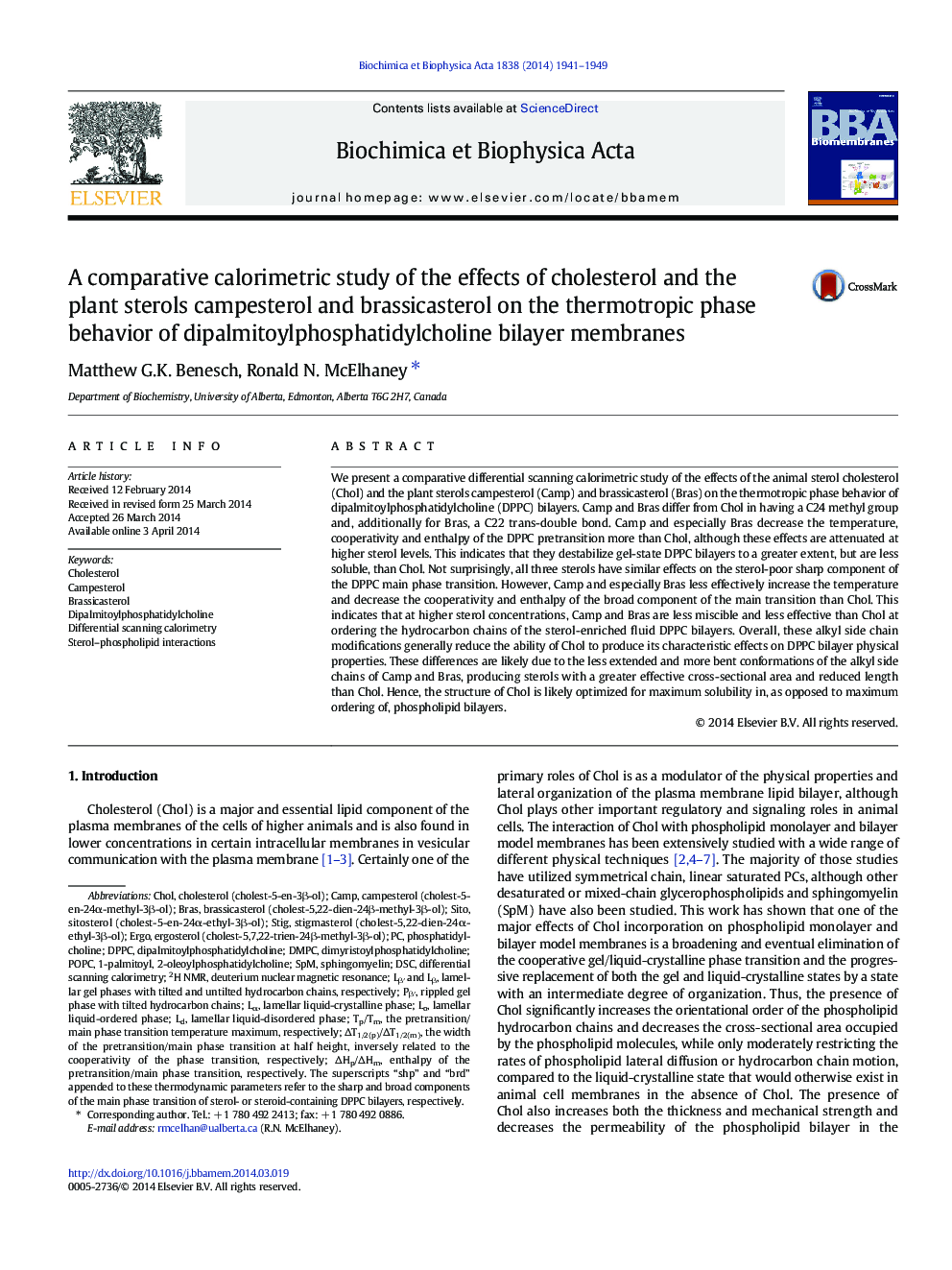| کد مقاله | کد نشریه | سال انتشار | مقاله انگلیسی | نسخه تمام متن |
|---|---|---|---|---|
| 1944228 | 1053191 | 2014 | 9 صفحه PDF | دانلود رایگان |
• Camp and especially Bras disorder gel state DPPC bilayers more than does Chol.
• Camp and especially Bras order fluid DPPC bilayers less than does Chol.
• Camp and especially Bras are less miscible in gel and fluid DPPC bilayers than Chol.
• A methyl group at C24 and trans-double bond at C22 reduce the effects of Chol.
• A less extended and coplanar conformation of Camp and especially Bras explains this.
We present a comparative differential scanning calorimetric study of the effects of the animal sterol cholesterol (Chol) and the plant sterols campesterol (Camp) and brassicasterol (Bras) on the thermotropic phase behavior of dipalmitoylphosphatidylcholine (DPPC) bilayers. Camp and Bras differ from Chol in having a C24 methyl group and, additionally for Bras, a C22 trans-double bond. Camp and especially Bras decrease the temperature, cooperativity and enthalpy of the DPPC pretransition more than Chol, although these effects are attenuated at higher sterol levels. This indicates that they destabilize gel-state DPPC bilayers to a greater extent, but are less soluble, than Chol. Not surprisingly, all three sterols have similar effects on the sterol-poor sharp component of the DPPC main phase transition. However, Camp and especially Bras less effectively increase the temperature and decrease the cooperativity and enthalpy of the broad component of the main transition than Chol. This indicates that at higher sterol concentrations, Camp and Bras are less miscible and less effective than Chol at ordering the hydrocarbon chains of the sterol-enriched fluid DPPC bilayers. Overall, these alkyl side chain modifications generally reduce the ability of Chol to produce its characteristic effects on DPPC bilayer physical properties. These differences are likely due to the less extended and more bent conformations of the alkyl side chains of Camp and Bras, producing sterols with a greater effective cross-sectional area and reduced length than Chol. Hence, the structure of Chol is likely optimized for maximum solubility in, as opposed to maximum ordering of, phospholipid bilayers.
Figure optionsDownload high-quality image (127 K)Download as PowerPoint slide
Journal: Biochimica et Biophysica Acta (BBA) - Biomembranes - Volume 1838, Issue 7, July 2014, Pages 1941–1949
